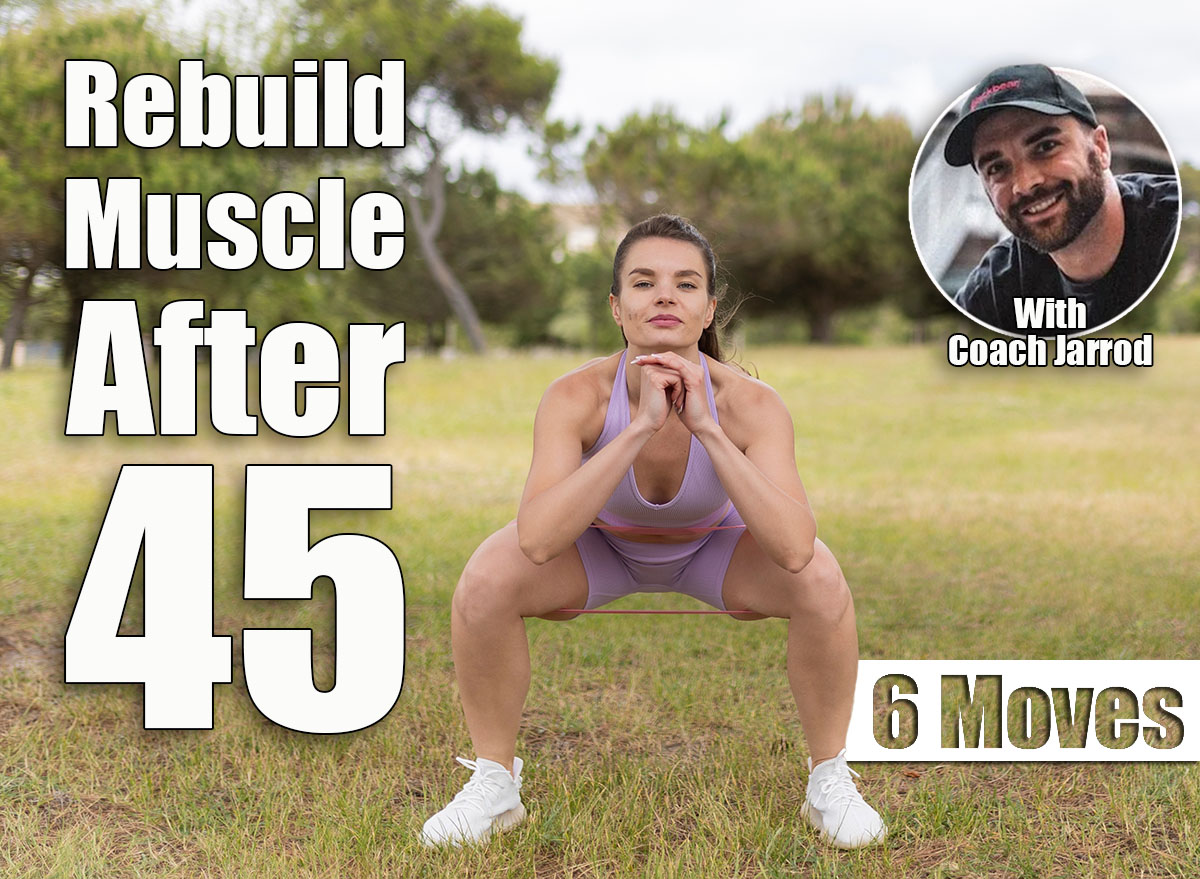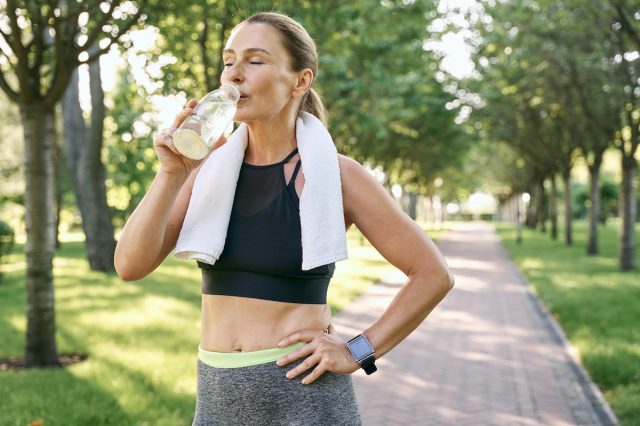6 Daily Standing Moves That Rebuild Lost Muscle Better Than Weights After 45

Losing muscle after 45 doesn’t happen overnight, but it does sneak up on you. One day, you’re powering through chores without breaking a sweat, and the next, you’re wondering why hauling in the groceries feels like an Olympic event. The good news is your body has an incredible ability to rebuild strength at any age, especially when you use moves that engage your muscles the way you actually live: standing tall and moving freely.
Standing exercises flip the switch on dormant muscles and activate your balance, coordination, and stability in ways machines never could. You’re not just moving up and down in a single track; you’re recruiting stabilizers, firing your core, and restoring power to the muscles that keep you strong in real life.
Better yet, these movements can be done anywhere. No gym. No equipment. Just you, your body, and gravity working together to restore what time may have chipped away. Each repetition is like depositing into your long-term strength account, ensuring you maintain muscle and independence.
Ready to roll back the clock? These six standing moves are your daily prescription for maintaining muscle and restoring strength. Do them consistently, and your body will thank you every time you bend, lift, or carry out an activity.
6 Daily Standing Moves to Rebuild Muscle After 45
Bodyweight Squats
Squats are the top-shelf option of standing moves because they recruit nearly every muscle in your lower body while also training core stability. They strengthen your legs for daily activities like climbing stairs, rising from chairs, and carrying groceries. After 45, rebuilding leg strength is one of the fastest ways to reverse muscle loss and keep independence.
Muscles Trained: Quadriceps, glutes, hamstrings, calves, core
How to Do It:
- Stand tall with feet shoulder-width apart.
- Keep your chest lifted and arms in front for balance.
- Push your hips back like you’re sitting into a chair.
- Lower until thighs are parallel with the floor.
- Drive through your heels to return to a standing position.
Recommended Sets and Reps: Perform 3 sets of 12–15 reps. Rest 45–60 seconds.
Best Variations: Sumo squat, split squat, wall sit
Form Tip: Keep your knees aligned with your toes throughout the movement.
Calf Raises
Calf strength often gets overlooked, yet it’s critical for walking, balance, and preventing falls. Daily calf raises rebuild lower leg muscle and keep your ankles resilient. Strong calves also protect your knees and hips by absorbing impact with each step you take.
Muscles Trained: Calves, ankles, foot stabilizers
How to Do It:
- Stand with feet hip-width apart near a wall or chair for balance.
- Press through the balls of your feet to rise onto your toes.
- Hold for 1–2 seconds at the top.
- Slowly lower your heels back down.
Recommended Sets and Reps: Perform 3 sets of 15–20 reps. Rest 30–45 seconds.
Best Variations: Single-leg calf raise, elevated calf raise, pulse calf raise
Form Tip: Move slowly and avoid bouncing.
Standing Side Leg Raises
This move strengthens your hip abductors, which are essential for stability and balance as you age. Weak hips are a leading cause of poor posture, back pain, and a higher risk of falls. Strengthening them daily rebuilds muscle and gives you steadier movement in every direction.
Muscles Trained: Glutes (medius and minimus), hip stabilizers, core
How to Do It:
- Stand tall with your hands on your hips or holding a chair for balance.
- Lift one leg straight out to the side without leaning your torso.
- Hold briefly at the top.
- Slowly return to the start.
- Complete all reps on one side, then switch.
Recommended Sets and Reps: Perform 3 sets of 12–15 reps per leg. Rest 45 seconds.
Best Variations: Side leg raise with pulse, crossover side kicks, banded side raise
Form Tip: Keep your torso upright and avoid tilting.
Standing Hip Extensions
Hip extension is a cornerstone of strength and athleticism, yet it’s often lost with age. Standing hip extensions directly target the glutes, the largest muscle group in your body, which helps rebuild muscle mass and improve posture. Strong glutes also reduce back pain.
Muscles Trained: Glutes, hamstrings, lower back, core
How to Do It:
- Stand with feet hip-width apart, holding a chair or wall for support.
- Extend one leg straight behind you without arching your back.
- Squeeze your glute at the top.
- Return slowly to the starting position.
- Repeat all reps on one side before switching.
Recommended Sets and Reps: Perform 3 sets of 12–15 reps per side. Rest 45 seconds.
Best Variations: Pulse hip extensions, bent-knee kickbacks, banded extensions
Form Tip: Keep your torso upright and avoid swinging your leg.
Standing Marches
Marches are deceptively simple yet powerful for building hip flexor strength, balance, and coordination. They also fire up your core as you stabilize on one leg. Daily marching can restore mobility and make walking, climbing, and even running easier.
Muscles Trained: Hip flexors, glutes, quads, calves, core
How to Do It:
- Stand tall with feet hip-width apart.
- Lift one knee to hip height while balancing on the other leg.
- Lower with control and alternate legs.
- Keep your arms pumping naturally as you march.
Recommended Sets and Reps: Perform 3 sets of 20–30 marches (10–15 each side). Rest 30–45 seconds.
Best Variations: High-knee marches, band-resisted marches, slow holds at the top
Form Tip: Stay tall and avoid leaning back as you bring your knee up.
Standing Torso Twists
Core strength is more than crunches. Standing torso twists train rotational power, balance, and spinal mobility. They help rebuild your obliques and deep core muscles while improving coordination for sports and daily activities, such as turning, lifting, and carrying.
Muscles Trained: Obliques, abdominals, spinal stabilizers, hip rotators
How to Do It:
- Stand tall with feet shoulder-width apart.
- Hold your hands in front of your chest.
- Rotate your torso to one side while keeping your hips facing forward.
- Return to the center, then rotate to the other side.
Recommended Sets and Reps: Perform 3 sets of 12 to 16 twists (6 to 8 each side). Rest 30 to 45 seconds.
Best Variations: Weighted torso twists, band-resisted rotations, pulse twists
Form Tip: Keep your hips square and move from your torso, not your arms.
The Top Tips for Rebuilding Muscle After 45

Training daily with standing bodyweight moves gives you a functional edge, but rebuilding muscle also requires smart strategies. Keep these tips in mind:
- Prioritize consistency: Daily training, even if short, compounds over time.
- Mix stability and strength: Alternate between balance-focused moves and powerful compound movements.
- Eat for recovery: Get enough protein to support muscle repair and growth.
- Stay hydrated: Proper hydration improves muscle performance and reduces cramps.
- Focus on posture: The more aligned your body, the more effective these moves become.